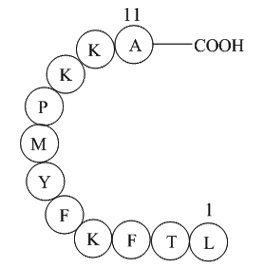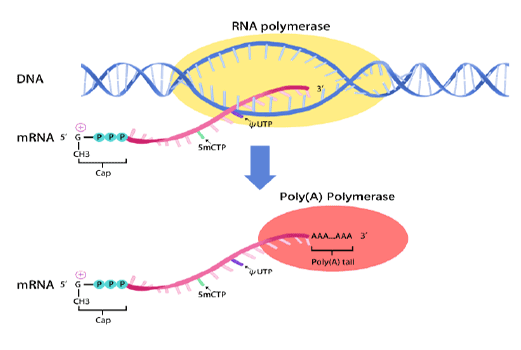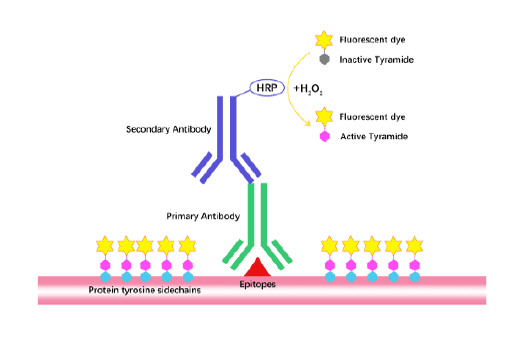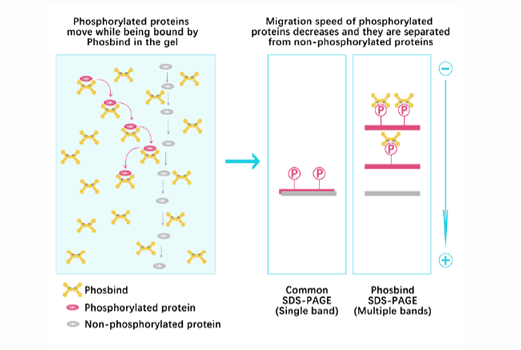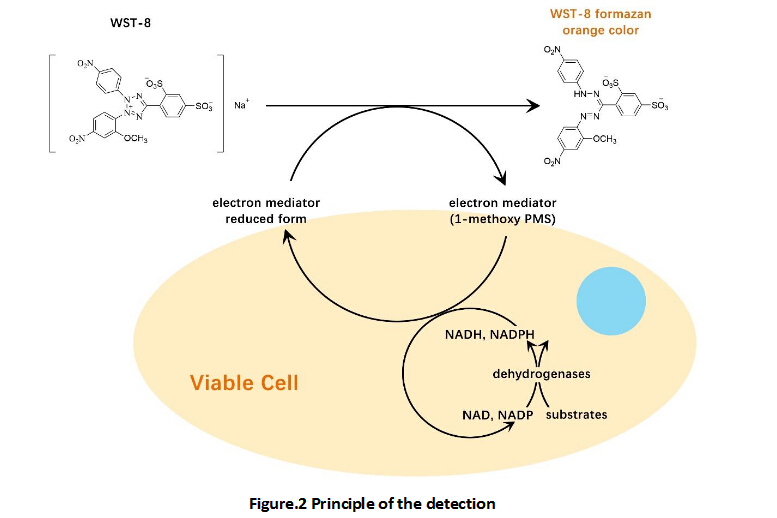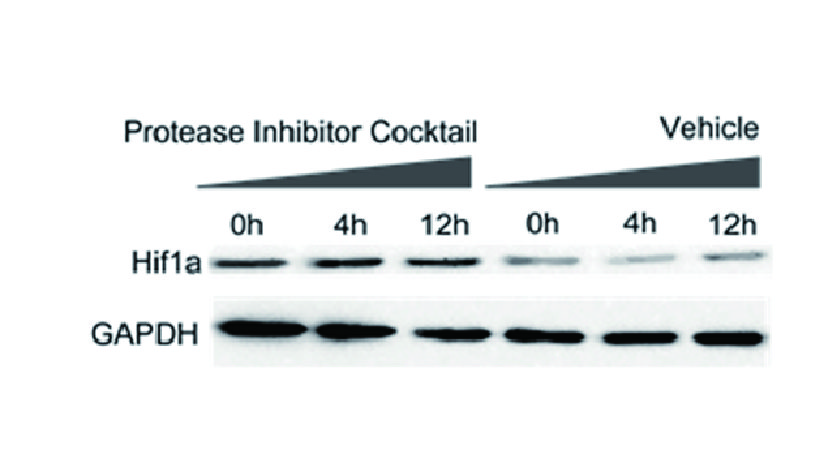Interleukin II (60-70)
Interleukin II (60-70), (C68H104N14O14S), is a peptide with the sequence NH2- LEU-THR-PHE-LYS-PHE-TYR-MET-PRO-LYS-LYS-ALA-COOH, MW= 1373.7. Interleukin 2 (IL-2) is a type of cytokine signaling molecule in the immune system, and it regulates the activities of the white blood cells (leukocytes, often lymphocytes) responsible for immunity. IL-2, a soluble hormone-like mediator of the immune system, was the first interleukin molecule to be identified and characterized. IL-2 is necessary for the growth, proliferation, and differentiation of T cells to become 'effector' T cells. IL-2 is normally produced by T cells during an immune response. It is necessary for the development of T cell immunologic memory, which depends upon the expansion of the number and function of antigen-selected T cell clones.IL-2 is also necessary for the maturation of a subset of T cells, termed regulatory T cells, during T cell development in the thymus.
Figure1 Formula of Interleukin II (60-70)
Figure2 Summary of effects of Interleukin II
Ref:
1. Cantrell DA, Smith KA (June 1984). "The interleukin-2 T-cell system: a new cell growth model". Science 224 (4655): 1312–6.
2. Smith KA (May 1988). "Interleukin-2: inception, impact, and implications". Science 240 (4856): 1169–76.
3. Sakaguchi S, Sakaguchi N, Asano M, Itoh M, Toda M (August 1995). "Immunologic self-tolerance maintained by activated T cells expressing IL-2 receptor alpha-chains (CD25). Breakdown of a single mechanism of self-tolerance causes various autoimmune diseases". J. Immunol. 155 (3): 1151–64.
4. ThorntonAM, Shevach EM (July 1998). "CD4+CD25+ immunoregulatory T cells suppress polyclonal T cell activation in vitro by inhibiting interleukin 2 production". J. Exp. Med. 188 (2): 287–96.
| Physical Appearance | A solid |
| Storage | Store at -20°C |
| M.Wt | 1373.7 |
| Formula | C68H104N14O14S1 |
| Synonyms | H2N-Leu-Thr-Phe-Lys-Phe-Tyr-Met-Pro-Lys-Lys-Ala-OH |
| Solubility | insoluble in EtOH; ≥11.34 mg/mL in H2O; ≥137.3 mg/mL in DMSO |
| SDF | Download SDF |
| Canonical SMILES | N[C@@H](CC(C)C)C(N[C@H]([C@@H](C)O)C(N[C@H](CC1=CC=CC=C1)C(N[C@H](CCCCN)C(N[C@H](CC2=CC=CC=C2)C(N[C@H](CC3=CC=C(O)C=C3)C(N[C@H](CCSC)C(N4CCC[C@@H]4C(N[C@@H](CCCCN)C(N[C@@H](CCCCN)C(N[C@@H](C)C(O)=O)=O)=O)=O)=O)=O)=O)=O)=O)=O)=O |
| Shipping Condition | Small Molecules with Blue Ice, Modified Nucleotides with Dry Ice. |
| General tips | We do not recommend long-term storage for the solution, please use it up soon. |
Quality Control & MSDS
- View current batch:
Chemical structure



